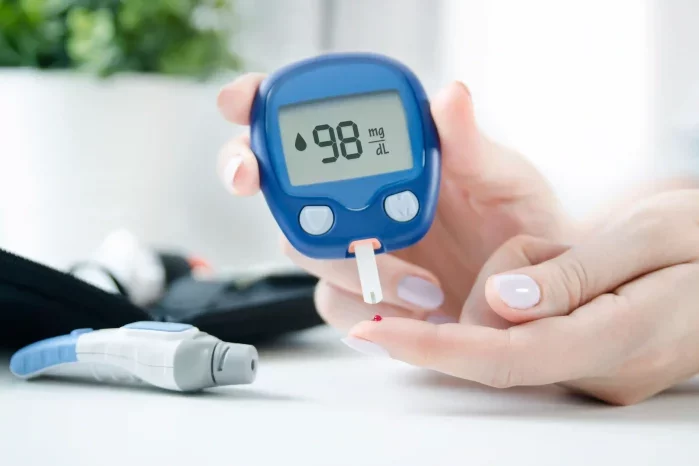Insulin resistance is a metabolic condition that occurs when the body’s cells become less responsive to the effects of insulin, a hormone responsible for regulating blood sugar levels. This resistance can lead to higher levels of glucose in the bloodstream, which, if unmanaged, can develop into prediabetes or type 2 diabetes. The good news is that insulin resistance can often be improved through lifestyle changes, including following an appropriate diet. An insulin resistance diet focuses on stabilizing blood sugar levels, reducing inflammation, and improving the body’s sensitivity to insulin.
Understanding Insulin Resistance
Before diving into the specifics of an insulin resistance diet, it’s essential to understand how insulin works in the body and why resistance develops. Normally, after you eat, carbohydrates are broken down into glucose, which enters the bloodstream. In response to rising glucose levels, the pancreas releases insulin, which helps cells absorb glucose for energy or storage. When insulin resistance occurs, the cells don’t respond effectively to insulin, causing the pancreas to produce even more insulin in an attempt to lower blood sugar. Over time, this can overwhelm the pancreas, resulting in elevated blood sugar levels.
Goals of an Insulin Resistance Diet
The primary goal of an insulin resistance diet is to lower blood sugar levels and improve the body’s sensitivity to insulin. This can be achieved by choosing foods that have a minimal impact on blood sugar levels, avoiding highly processed and sugary foods, and incorporating nutrients that help manage insulin sensitivity. The diet should also focus on achieving and maintaining a healthy weight, as excess body fat—particularly around the abdomen—can worsen insulin resistance.
Key Components of an Insulin Resistance Diet
An insulin resistance diet is centered around whole, unprocessed foods that are rich in nutrients, fiber, and healthy fats. Here are the core components:
1. Low Glycemic Index (GI) Foods
The glycemic index is a system that ranks foods based on how quickly they raise blood sugar levels. Foods with a high glycemic index (such as white bread, sugary snacks, and refined carbohydrates) cause a rapid spike in blood sugar, which can worsen insulin resistance. In contrast, low GI foods are digested more slowly, leading to a gradual rise in blood sugar. These foods help maintain stable blood glucose levels, preventing insulin spikes.
Some examples of low-GI foods include:
- Whole grains (e.g., oats, quinoa, barley)
- Legumes (e.g., lentils, chickpeas, black beans)
- Non-starchy vegetables (e.g., broccoli, spinach, bell peppers)
- Most fruits (e.g., apples, berries, citrus fruits)
2. High Fiber Foods
Fiber plays a crucial role in managing insulin resistance by slowing the digestion of carbohydrates and reducing the rate at which glucose is released into the bloodstream. A diet rich in fiber can help lower blood sugar levels, improve insulin sensitivity, and promote weight loss. Additionally, fiber helps maintain digestive health and can reduce the risk of heart disease, a common complication in people with insulin resistance.
Foods high in fiber include:
- Whole grains (e.g., brown rice, quinoa, oats)
- Vegetables (e.g., leafy greens, Brussels sprouts, carrots)
- Legumes (e.g., lentils, beans, peas)
- Fruits with the skin on (e.g., apples, pears, berries)
- Nuts and seeds (e.g., flaxseeds, chia seeds, almonds)
3. Healthy Fats
Contrary to what some may believe, not all fats are harmful—some fats can actually improve insulin sensitivity and support overall metabolic health. Healthy fats, particularly monounsaturated and polyunsaturated fats, play a role in reducing inflammation and improving insulin signaling. Omega-3 fatty acids, found in fatty fish, have also been shown to lower the risk of insulin resistance and cardiovascular disease.
Sources of healthy fats include:
- Fatty fish (e.g., salmon, mackerel, sardines)
- Avocados
- Nuts and seeds (e.g., walnuts, flaxseeds, chia seeds)
- Olive oil and other plant-based oils (e.g., avocado oil, flaxseed oil)
- Nut butters (e.g., almond butter, peanut butter)
It’s essential to avoid trans fats and limit saturated fats, as they can increase inflammation and exacerbate insulin resistance.
4. Lean Proteins
Protein is a vital component of an insulin resistance diet because it helps regulate blood sugar levels and keeps you feeling full. Including adequate amounts of lean protein in meals can prevent overeating and minimize spikes in blood glucose. Moreover, protein-rich foods have a low glycemic index, making them excellent choices for stabilizing blood sugar.
Healthy sources of lean protein include:
- Poultry (e.g., chicken, turkey)
- Fish and seafood
- Eggs
- Plant-based proteins (e.g., tofu, tempeh, lentils)
- Low-fat dairy (e.g., Greek yogurt, cottage cheese)
- Legumes and beans
5. Antioxidant-Rich Foods
Chronic inflammation is associated with insulin resistance, and eating foods rich in antioxidants can help reduce inflammation in the body. Antioxidants are compounds found in certain foods that protect the body from oxidative stress and inflammation, both of which can impair insulin function.
Foods rich in antioxidants include:
- Berries (e.g., blueberries, strawberries, raspberries)
- Dark leafy greens (e.g., kale, spinach, collard greens)
- Nuts and seeds
- Green tea
- Dark chocolate (in moderation)
Foods to Avoid on an Insulin Resistance Diet
In addition to focusing on nutrient-dense foods, it’s crucial to avoid or limit certain foods that can exacerbate insulin resistance and lead to blood sugar spikes.
1. Refined Carbohydrates
Refined carbs, such as white bread, pastries, and sugary snacks, are quickly digested and absorbed, leading to rapid increases in blood sugar levels. These foods also lack fiber, which makes them less filling and can contribute to overeating.
Examples of refined carbohydrates to avoid include:
- White bread and bagels
- White rice and pasta
- Sugary cereals
- Baked goods (e.g., muffins, cakes, cookies)
- Processed snack foods (e.g., chips, crackers)
2. Sugary Beverages
Sugary drinks are one of the most significant contributors to insulin resistance. These beverages contain high levels of added sugars, which cause blood sugar spikes and provide little to no nutritional value. Even fruit juices, which are often perceived as healthy, can be high in sugar and should be consumed in moderation.
Beverages to avoid include:
- Soda and soft drinks
- Sweetened coffee and tea
- Energy drinks
- Fruit juices with added sugars
- Sports drinks
3. Processed and Fried Foods
Processed foods often contain unhealthy fats, added sugars, and refined carbs, all of which can worsen insulin resistance. Fried foods, in particular, are high in trans fats and can promote inflammation, negatively impacting insulin sensitivity.
Foods to avoid include:
- Fast food
- Fried foods (e.g., French fries, fried chicken)
- Packaged snacks (e.g., potato chips, pretzels)
- Processed meats (e.g., sausages, hot dogs, deli meats)
- Frozen meals and processed ready-to-eat foods
4. Artificial Sweeteners
While artificial sweeteners may seem like a good alternative to sugar, some studies suggest that they may have negative effects on insulin sensitivity and metabolic health. It’s best to use natural sweeteners like stevia or limit sweeteners altogether.
Meal Planning for Insulin Resistance
Meal planning plays a crucial role in managing insulin resistance. The goal is to create balanced meals that include lean proteins, healthy fats, fiber-rich carbohydrates, and low-glycemic vegetables. Here’s a sample meal plan for a day:
- Breakfast: Scrambled eggs with spinach, avocado slices, and a piece of whole-grain toast.
- Lunch: Grilled chicken salad with mixed greens, quinoa, cherry tomatoes, cucumber, and a drizzle of olive oil.
- Snack: A handful of almonds and a small apple.
- Dinner: Baked salmon with roasted Brussels sprouts, sweet potato, and a side of quinoa.
- Snack: Greek yogurt with chia seeds and a few blueberries.
Lifestyle Changes to Support Insulin Resistance Diet
In addition to following an insulin resistance diet, incorporating lifestyle changes can further improve insulin sensitivity and support overall health.
Regular Physical Activity
Exercise is one of the most effective ways to improve insulin sensitivity. Both aerobic exercise (such as walking, jogging, or swimming) and strength training (such as lifting weights or using resistance bands) help lower blood sugar levels and increase the body’s responsiveness to insulin.
Aim for at least 30 minutes of moderate exercise most days of the week.
Achieving and Maintaining a Healthy Weight
Excess weight, particularly around the abdomen, is a significant risk factor for insulin resistance. Losing even a small percentage of body weight—around 5-10%—can lead to significant improvements in insulin sensitivity.
Getting Enough Sleep
Lack of sleep can negatively impact insulin sensitivity and increase the risk of developing insulin resistance. Aim for 7-9 hours of quality sleep per night to support metabolic health.
Stress Management
Chronic stress can contribute to insulin resistance by promoting the release of cortisol, a hormone that raises blood sugar levels. Stress management techniques such as mindfulness, yoga, deep breathing, and meditation can help reduce stress and improve insulin sensitivity.
See also: What Can I Take for Insulin Resistance Over the Counter?
Conclusion: Adopting an Insulin Resistance Diet
An insulin resistance diet is not just about reducing sugar intake—it’s about creating a balanced and nutrient-rich eating plan that supports overall metabolic health. By focusing on low glycemic index foods, increasing fiber intake, incorporating healthy fats, and maintaining regular physical activity, you can significantly improve your insulin sensitivity and prevent the progression of insulin resistance. With the right dietary and lifestyle choices, managing insulin resistance can become a sustainable and effective strategy for long-term health.
Related topics:
What Helps Fight Insulin Resistance?



























